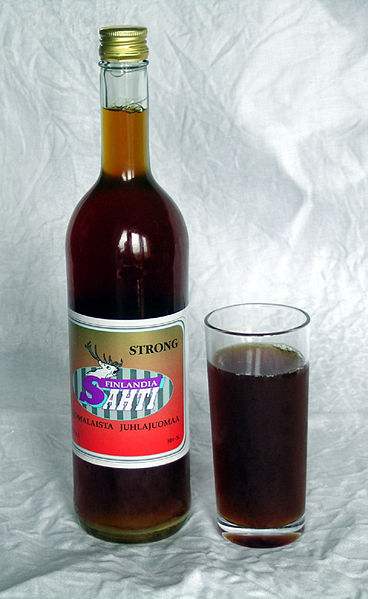The locality also plays a special role in the richness of products. God endowed each place with a great diversity of riches and resources, many of which are hidden. In His Providence, He put those things there principally for the discovery and use of those who live in the locality and to aid them in their quest for perfection.

Sahti, a traditional beer from Finland made from a variety of grains, malts and flavored with Juniper berries. The mash is filtered through juniper twigs.
Thus, it is proper that regions discover and use their own local resources to produce an astonishing array of products. In this way, presenting everything that the region has of its best becomes truly a work of art. Contrary to modern economy and its law of comparative advantage, we should not automatically assume that a locality cannot fulfill a specific need. The Corsican cheese makers cited above were not resigned to import the “best” cheese from the French mainland as might happen today. Instead they sought out the seemingly meager resources of the area to produce the finest of cheeses. 
Of course, local products will not always be able to provide for all our needs, but necessity is often the mother of ingenious invention. Local needs can force man to make great efforts to use his creativity and skills to extract those resources and produce items of extraordinary originality that confer cultural richness and diversity upon an area. In this sense, the possibilities for local production are practically limitless.

Helenite, also known as Mount St. Helens gemstone, which was made from the fused volcanic rock dust from Mount St. Helens after the 1980 eruption of Mount St. Helens in Washington.
Locals used the fragrant juniper berry, for example, to flavor gin. They further distilled juniper oil from the wood and leaves of several species and used it in perfumes and medicines. So it is that local and distinctive foods, fabrics, arts, and architectural styles are created. Even when better and well-established alternatives are available elsewhere, it should not prevent local producers from challenging these products with their own original creations, and local consumers from preferring—and therefore buying—their region’s very own.

Black Hills Gold Jewelry, a type of jewelry manufactured in the Black Hills of South Dakota and the designated official state jewelry of South Dakota.
Even the locality itself can enter into products. For example, medieval craftsmen would often include in their artwork local animals, plants, and scenes culled from daily life, which gave their works a distinctively picturesque, familiar, and warm human quality. “The worker who had walked through the nearby fields or woods on a holiday,” writes Lewis Mumford, “came back to his stone carving, his wood working, his weaving or gold-smithing, with a rich harvest of impressions to be transferred to his work.”* The potter might perceive local colors and use them when glazing his dishes, or the stone carver might observe a field mouse and sculpt it on his column. Their products were truly local.
This mutual interpenetration of people and place creates the conditions for a rich culture. Just as the bee takes the local flowers’ nectar to produce its unique honey, so also the creativity of a people takes from the locality those materials that result in products that are custom-made expressions of their own creativity, culture, and mentality—and not those of others.
* Lewis Mumford, The City in History: Its Origins, Its Transformations, and Its Prospects (New York: Harcourt, Brace, Jovanovich, 1961), 297-98.
John Horvat, Return to Order: From a Frenzied Economy to an Organic Christian Society—Where We’ve Been, How We Got Here, and Where We Need to Go (York, Penn.: York Press, 2013), 277-8.












